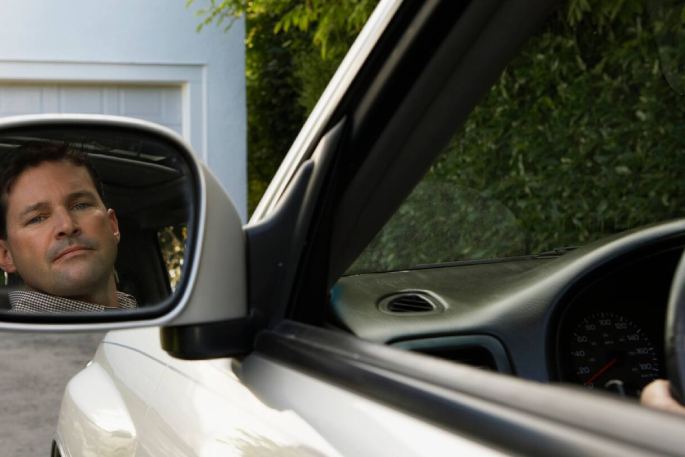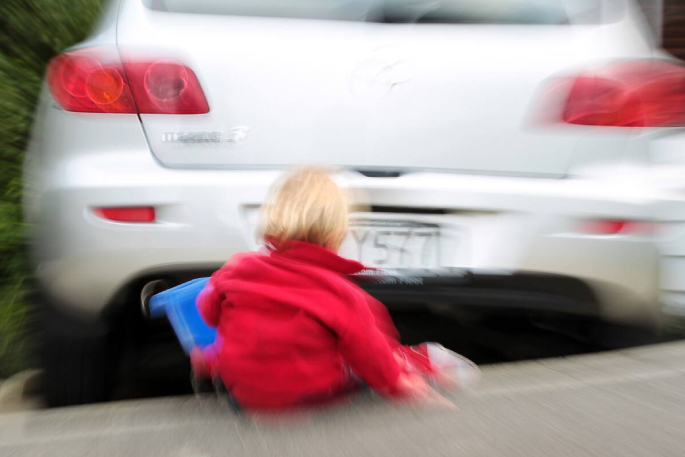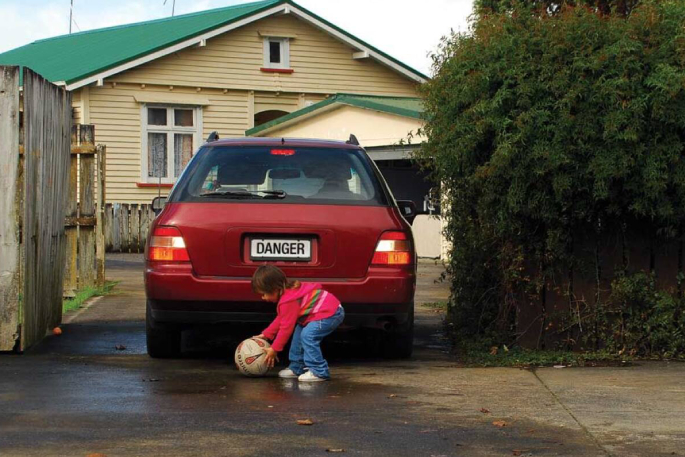“There’s no going back. Once it’s happened, it ruins families, it ruins lives,” says Safekids Aotearoa director Mareta Hunt.
Recently, the Bay of Plenty has seen several incidents where a child has been hit in their driveway.
Police, Hato Hone St John, Safekids Aotearoa, NZ Transport Agency Waka Kotahi and Plunket share how these instances can be prevented and lives can be saved.
Child safety outside the vehicle
“Take care while exiting driveways, being particularly mindful that small children may be outside your usual line of sight,” says Hato Hone St John Western Bay of Plenty area operations manager Mat Delaney.
Over recent months there have been several incidents in the Bay of Plenty where a child has been hit in their driveway.
“Incidents like these when a child has died on their own property are one of the worst possible situations for a police officer to attend,” says a police spokesperson.
“Police’s thoughts are with the families involved and we are ensuring there is support available for them at this difficult and sad time.”
 A police spokesperson says these are one of the worst incidents to attend. Photo: NZME.
A police spokesperson says these are one of the worst incidents to attend. Photo: NZME.
The police spokesperson says although driving on your driveway is instinctive, it can be dangerous so it is important to take the proper precautions.
“Here are some safeguards to follow:
- Look for children around your vehicle and underneath before getting into the vehicle.
- Have a safe and designated area where children learn to wait when a vehicle is leaving or entering your driveway, and where the driver can see them.
- Install gates to make it difficult for children to access the driveway.
- As with road safety, talk to your children about the dangers of driveways and the importance of keeping the driveway clear of toys and objects.
“Young children (under 4 years old) are particularly at risk of serious injury and even death on driveways, especially at their own home,” says NZTA Bay of Plenty and Waikato director of regional relationships David Speirs.
“In many cases, the driver of the vehicle involved is a parent or relative who is reversing.
“The death or serious injury of a child in a driveway accident is a terrible tragedy for everyone involved.
“While technology like reversing cameras and alarms can help to reduce the risk, even vehicles equipped with these cameras can still have blind spots.
“It’s important that children are discouraged from playing on or around moving vehicles, and drivers should always check, and double-check, for children when reversing any vehicle.”
Check, supervise and separate, says Safekids Aotearoa director Mareta Hunt.
- Before you get in, always walk around the car and check for children.
- Separate play areas from driveways with fencing and gates.
- Supervise children whenever cars are moving.
“The driveway isn’t a road, it’s not a play area. Families need to check around their vehicle, don’t just rely on the reversing cameras and the sensors to pick It up.
“Those devices that are available on cars are to prevent damage to the car, not to children.
“It’s not designed to pick up when there’s a child or a baby beneath your vehicle and there are blind zones that still aren’t picked up by those reversing cameras and sensors.
 Check, supervise, seperate and double-check. Photo: NZME.
Check, supervise, seperate and double-check. Photo: NZME.
“It’s important to know where your children are before getting in the car. If parents and children are outside, ensure you know where your children are.
“If there’s no one to supervise, take your child in the car with you and ensure that they’re safe when going on the road.
“It’s all about checking around your vehicle before you get in and looking under your vehicle before you get in.”
Mareta says that in urban communities, people sit in their cars for a little bit longer, often checking their phones or checking routes or putting on music, and that time provides a recipe for unknowns to happen after you’ve done your safety check.
“I encourage you to check again that your door closes before you leave, the children are playing inside or that they’re being supervised and there aren’t other children playing nearby you who could run behind the vehicle while you’re not looking.”
Mareta says parents should have a safety zone for when the children are not inside the vehicle or the house.
“The safety zone needs to be well out of the way within property boundaries and needs to be seen by the driver as they reverse out.”
The Bay of Plenty has seen several of these incidents in the last month. Mareta says there is an over-reliance on reversing cameras and sensors, which are not going to remove the risk completely.
“Drivers need to take some responsibility as well as parents. We really need people and families to understand that the driveway is a road and to treat it as a road.
“It’s better to do a simple walk around your car and have these little checks done that become part of your everyday routine. It doesn’t take much more out of your day to go around and do these checks and know that your children are safe.”
So, who do you think is responsible for looking out for the child? Is it the parents, or the driver?
“Both need to take equal responsibility to do their diligence and checks,” Mareta says. “Parents need to ensure that they are separate, secure and supervised, and the drivers need to ensure that they do their checks.
“Regardless of who we blame, we each hold our own area of control.”
“Young children are really inquisitive, especially as they grow and become more mobile,” says Whānau Āwhina Plunket national injury prevention manager Kathryn Impelmans.
 Five children are killed in driveway run-overs each year in New Zealand according to Safekids Aotearoa. Photo: NZME.
Five children are killed in driveway run-overs each year in New Zealand according to Safekids Aotearoa. Photo: NZME.
“However as they become more mobile, their ability to judge risk doesn’t develop at the same rate.
“They generally don’t have the ability to judge speed and distance, the direction of sounds and their peripheral vision is still developing.
“They assume that cars can stop instantly and think that if they can see the driver, the driver can see them.
“They cannot perceive complicated traffic situations and tend to concentrate on what interests them most at a particular time.
“They move quickly but have minimal awareness of hazards and dangers.
“Actively supervise small children around vehicles. It’s a good idea to hold your child’s hand or keep them within arm’s reach – no one wants their child to be hit by a vehicle under any circumstances.”
Facts from Safekids about driveway run-overs:
- Five children are killed each year
- More than 20 are hospitalised each year
- One child is admitted to Starship children’s hospital a fortnight
- 49 per cent of drivers are the victim’s parent, 17 per cent are other relatives, 13 per cent are neighbours and 21 per cent are visitors
- 66 per cent of children run over are 0-2 years old
- Reversing cameras aid parking but don’t always prevent driveway run-overs
- Danger times are before lunch and dinner
- Spring and summer are dangerous months with kids outside and house doors left open
- Run-overs can occur in either direction, with 68 per cent happening while reversing and 32 per cent while going forward
- Vehicle design is a contributing factor with blind zones in the front, side and rear
- Environment is a contributing factor with long shared driveways and lack of separate pedestrian access.
Child safety inside the vehicle
“Unfortunately, attending vehicle-related incidents is a routine part of our job – often in avoidable circumstances, and often involving young children as injured passengers or pedestrians,” Hato Hone St John Western Bay of Plenty area operations manager Mat Delaney.
“Driving to conditions is key to avoiding accidents and having to come into contact with us.
 Drive to the conditions, follow the road rules, avoid distractions and wear a seatbelt. Photo: NZME.
Drive to the conditions, follow the road rules, avoid distractions and wear a seatbelt. Photo: NZME.
“Please avoid distractions (no phone use or taking eyes off the road to grab any items in the car), maintain safe following distances, avoid drugs or alcohol before driving, and don’t drive tired.”
“Child restraints play a very important role in keeping children safe on our roads,” says NZTA Bay of Plenty and Waikato’s David Speirs.
Under New Zealand law, all children under 7 years of age must use an approved child restraint appropriate for their age and size.
“Children aged 7 must be secured in a restraint if one is available in the vehicle.
“Seatbelts support you in a crash or when the vehicle stops suddenly.
“Without a seatbelt, front-seat occupants can be thrown through the windscreen and onto the road.
“Back-seat passengers can be thrown onto the front seats or the front seat passengers or can hit the roof.
“Wearing a seatbelt reduces the risk of being killed or seriously injured in a road crash by about 40 per cent.
“If everyone wore their seatbelts an estimated 25 lives could be saved from road crashes each year.”
“Using correctly installed child car restraints (seats) that are appropriate for the child’s age, size and development, provide the best possible protection for a child if they are involved in a car crash,” says Whānau Āwhina Plunket’s Kathryn Impelmans.
 All children aged under seven must be secured in an approved child restraint when travelling in cars or vans, according to NZTA. Photo: NZME.
All children aged under seven must be secured in an approved child restraint when travelling in cars or vans, according to NZTA. Photo: NZME.
“We recommend children remain rear-facing when travelling in a vehicle to at least 2 years of age.
“Continue to use a child car restraint (seat) for as long as possible until the child has fully outgrown the height/weight limits of the restraint/booster and ideally has reached 148cm tall before transitioning to an adult seatbelt.
“Ask a child restraint technician to check your child’s car restraint is correctly installed.
“Unsecured items and pets travelling in the vehicle also have the potential to cause injury in the event of a crash – to reduce the risk buckle in pets and place loose objects in the boot.
“To reduce risk it is best to make sure pets are buckled in and loose objects such as bags of groceries are placed in the boot.
“A child restraint suitable for the child’s age, size and development that meets product safety standards approved for use in New Zealand if installed and used correctly will provide the best protection for a child if they are involved in a crash.
“It is the driver’s responsibility to ensure a correctly installed child car restraint (seat) that is appropriate for the child’s age, is used every time, for every ride – this provides the best possible protection for a child if they are involved in a car crash.”



0 comments
Leave a Comment
You must be logged in to make a comment.